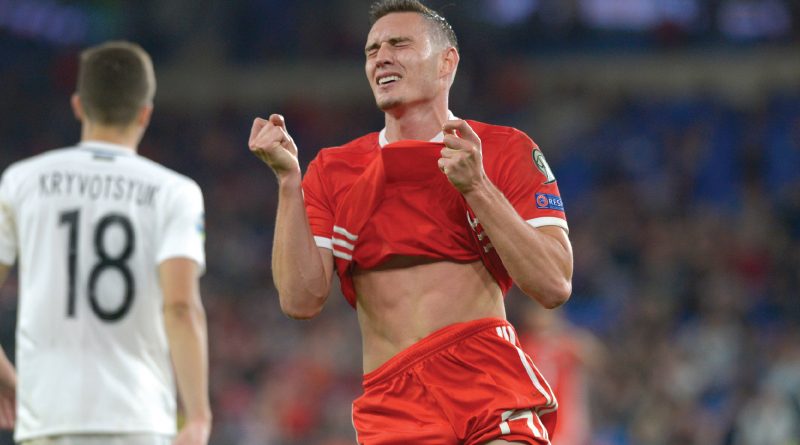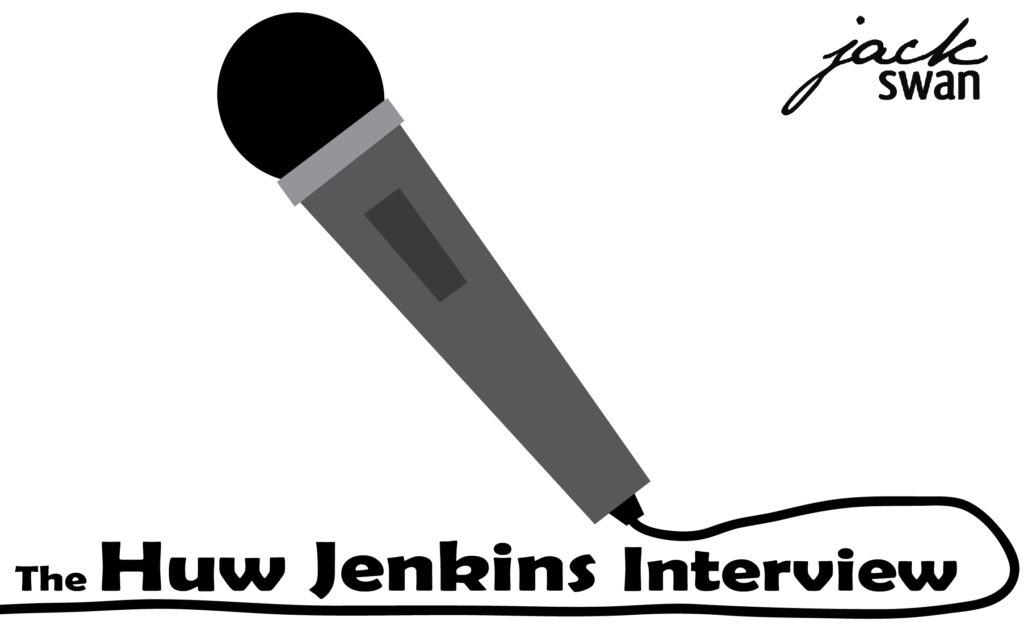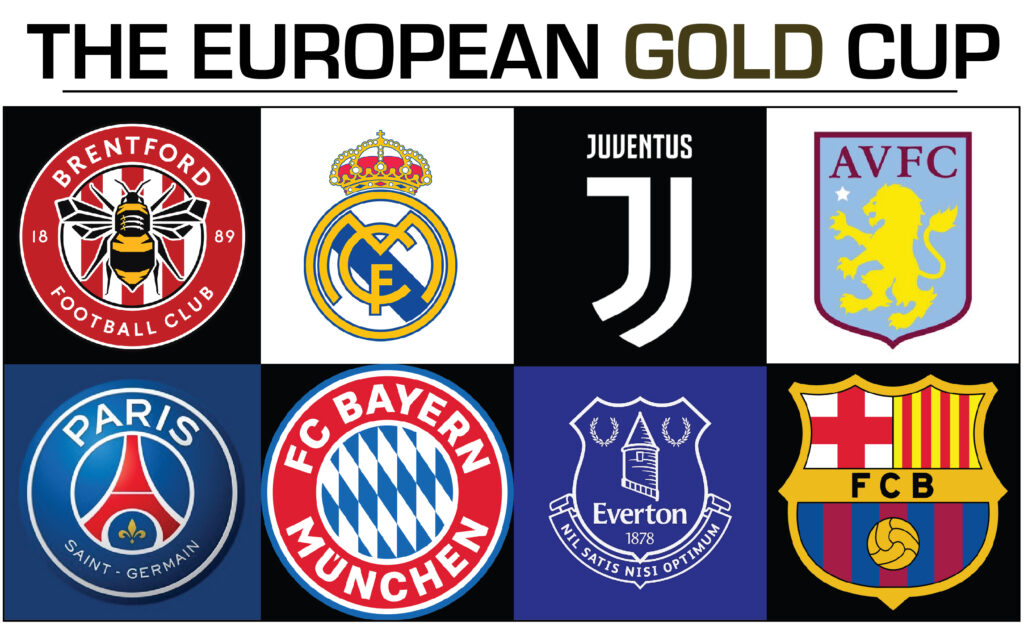SWANSEA: FOOTBALLS BREEDING GROUND
There have been few better places at creating top footballers than Swansea and its catchment area over the last decade. Watching Wales at Euro 2021 shows this. It hasn’t always been that way, there are those players who got away. Here we look at the history of footballers in Swansea.
Where else better to start than with Mel Nurse?
Mel was a kid during World War ii and is Mr Swansea. I first wanted to try and get my head around how young footballers saw the world back then. “football was just football. There was no money in it.” He says, I asked him whether you would see Manchester United scouts around “Manchester United? Who are they? No, you would just play football. Why would I want to go to Manchester United? Leave my friends and family?”
Football was simple back then. There were no millionaires, no football agents and no huge money to be made from players. In 1960 the maximum a footballer could earn was £20 a week, a fee that many clubs could afford to pay for their top earners and so there wasn’t the allure of leaving for greater and better things.
Welsh Schoolboys
At a young age, the ‘Schoolboys’ was a big thing. Representing Swansea or Wales but these were not kids being spoon-fed. “it is crazy when I come to think about it. I’d have to get a train from the station which has gone now, but was where the LC2 is now, get a train from there over to Blackpill and then one which went up to North Wales. As a kid, I’d do that and meet up with the rest of the Welsh schoolboys”.
Mel couldn’t remember whether he would have paid for this or not but assumed that he must have had expenses. It is hard to imagine a 14 year old budding footballer being sent on his way to North Wales on their own these days. I spoke with the Welsh FA about this who confirmed that it has obviously changed considerably. There is a team dedicated solely to arranging transport for footballers representing Wales. This says something about how young footballers are ‘wrapped up in cotton wool’ these days but on this occasion, arguably no different to any other adolescent.
Although Mel was adamant that he would never have considered leaving, some did leave. John Charles among them, Mel remembers ‘he went up to Leeds, there was a scout which they had down here Jack Pickard and he would send a few boys up every year but most of them would come straight back homesick.”
Gary Sprake
Gary Sprake was another who went and survived in Leeds. He sadly passed away a few years back but his daughter kindly sent me some clippings of him speaking to a local newspaper about his early career:-
“My first school was Llansamlet Secondary Modern where Rugger was the school game. I moved to the school soccer team (at 14 years old, in goal of course) and a year later played for Swansea schoolboys against Newport. At 15 I had left school and became an apprentice fitter and turner at a local works Smith & Clark. I played for the football team among men and boys much older than I, which resulted in me being chosen for a Welsh Youth team against a Pembroke side. It was really a trial game although unknown to me, I was being watched at this time by Leeds scout Jack Pickard who eventually took me to Elland Road for a two week trial – and I signed as an Apprentice Professional.”
How Jack Pickard was able to find and attract the likes of John Charles and Gary Sprake to Leeds under the noses of Swansea City F.C is difficult to comprehend. Football was becoming a business, the country seemed smaller and players were becoming assets to be poached. Leeds, with Sprake and Charles and others from across the country, dominated English football at this time. They were the first to fully invest in scouting and attracting the best young talent and they benefitted from it.
1970s: TIDES ARE A CHANGING
Other clubs followed Leeds, in 1970, Brian Flynn joined Burnley, signing a professional contract two years later. Port Talbot boy, he trained with Cardiff City after representing Neath and Welsh Schoolboys. But it was Burnley, not Cardiff nor Swansea who benefitted from him.
“I signed in a back street in the back of Burnley chief scouts’ Dave Blackey’s car in Edinburgh.” Flynn remembers. “I was playing for Wales against Scotland schoolboys and in those days you could leave school at 15. My last official day in school was the Scotland game.” After three years, the Clarets sold him to Leeds for £175,000.
Leighton James also went to Burnley from Loughor. The Clarets sold him to Derby for £310,000. Burnley had made half a million pound in the early 70s from two players born within ten miles of Swansea. How and why did this happen?
Ambition
In 1970, Burnley were in the topflight (although got relegated that season) whilst Swansea had just been promoted to the third tier. Cardiff were in the second tier. We are before the days of youth agents but football was becoming big business.
The problem was that some clubs were in a financial position where they could invest into the short term future whilst others could only live for the now. Signing the next big thing was a race for scouts across the country. The late 70’s and early 80s saw new caps for local boys Donarto Nadiello, Ian Walsh, Steve Lovell and Terry Boyle but they had already left for English clubs.
I wanted to try and understand why these young players were leaving Swansea. Was it that Swansea were unaware of them and there is a scouting flaw or that players simply preferred to go elsewhere. I caught up with Ex-Welsh international, Spurs and Swansea player Terry Boyle.
Terry Boyle
“When I was 13 or 14, (Swansea manager) Harry Gregg came to my house wanting to sign me. At that time, you have that idea of chasing something. I was just loving my football. I was in Llanelli Gramma school and had a teacher there whose father was head of the selectors for Welsh Schoolboys and from Ebbw Vale where there was a scout from Spurs called Harold Joy. That was the link I had to Spurs and Spurs took my fancy; I was a young 14-year-old boy and obviously very impressionable. Spurs were in the top division, the Swans were in the lower leagues. I wanted to achieve something and the rest is history.”
So at 15, Terry left his friends and family and moved to London. “It was a wrench, it wouldn’t happen today with welfare issues. I travelled on my own on train and was in a boarding school for 18 months”.
If it was today?
I’m curious whether Terry feels that he would have stayed in Swansea if there were the same facilities available then than there were today “I think without a doubt. I am sure that the thought process would have been a lot different. I just wanted to play football, I loved football.”
Terry is now coaching in the academy at Hull where he tells me there is a good link between the Swans and them. I ask how the kids are different today as they were in the early 80s “It’s totally different now, obviously social media and everything. Kids nowadays maybe aren’t in love with football but the rewards from football. Back in my day, you were allocated jobs, discipline, you were street wise, now the environment is very sterile, you have to deal with kids totally differently.”
We can’t criticise the Swans for not finding and attempting to bring Terry into the Swansea system. Harry Gregg went to his house but Terry and his family must have felt that Swansea were unable to offer him the chances to fulfil their dream and he felt the need to go through the ‘wrench’ of leaving everyone he had ever known rather than signing for Swansea. That’s a real eye opener there!
1980s TOSHACK INFLUENCE?
In 1978 Swansea City appointed John Toshack as manager. We all know the story of the rise (and fall) but what we overlook is what happened with young footballers at this time. Suddenly, Swansea City had ambition, young footballers could see top quality players in their own city.
In the 1982/83 season, all of these local players played in the top flight for Swansea City: Dudley Lewis (21), Chris Marustik, (22) Jeremy Charles, (24) Gary Richards (20), Huw Lake (19), James Loveridge (20), Chris Marustik (22), Colin Pascoe (18) Darran Gale (20) and Dean Saunders (19).
During the 1980s, the Swansea area produced more Welsh internationals than any other decade. Despite the mighty Welsh rugby team, 20,000 fans would cram into the Vetch on a Saturday and youngsters wanted to get on that pitch
The Dark Ages
But it was short lived. The 90’s and 00’s were terrible times for Swansea. One of the few success stories over this period was Andrew Mumford but the Swans could take little credit. “I joined the Swans straight in as a pro” he tells me “I had a few clubs in for me and the Swans offered me a good contract, I think they were a bit embarrassed about the prospect of a local boy going somewhere else. The chance to play for your local club, I couldn’t turn down.”
But a few years earlier, like Terry Boyle, Mumford was unimpressed with his chances of succeeding at Swansea “I remember being invited to some centre of excellence at the Swans when I was a kid, there was about 40 boys there. But me and my Dad left afterwards and thought it was a joke to be honest with you. It was run by the kitman.”
Instead, at 13/14 Mumf would travel once a week to Chepstow where Norwich ran an academy, meeting up with the likes of Chris Llewellyn and Craig Bellamy. “Every Wednesday we’d head up there, but it was tiring to be honest with you with school the next day and everything.”.
Interest from other clubs
Mumf had caught the eye of Manchester United, Newcastle, Cardiff, Grimsby, Norwich and others but Swansea were barely doing anything. “I spent a week with Man Utd, obviously at that time they were one of the biggest teams in the world. Trained with Nicky Butt and the Neville’s and all them with Sir Alex. If I had been offered a contract, then obviously you never know but it would have been hard to turn it down. I got offered a six-month deal at Newcastle but I just wanted to play football to be honest with you”
“At 16 I was offered a contract from Cardiff, offered a two year deal but by then I had broken into the Llanelli first team. Playing football and learning more from playing against adults than what I would have at an academy. We had a youngster at Afan Lido, Noah Daley and he’s just signed for Carmarthen. I said to him that I reckon his career will go as mine did. You see these players still in the academy at 22/23 and then when they are released, they aren’t good enough for the League of Wales.”
“I played from a young age, got kicked, learned how to deal with it and then when I signed my first professional contract it was a good contract. The higher level I played the easier I found it, my game was better suited. The Championship and League One I found easier than in League Two. Playing passing football on perfect pitches in the academy until you are 23 doesn’t set you up for an away night match in the rain at Newport.”
Coaching
Although I see Mumfs point, I wonder whether he and other players could have benefitted from top quality coaches and facilities, like the Swans have now from an early age. “You’d be fitter. Pick up more special awareness, but we still always hear about ‘natural players’, whether a coach can make someone into a natural footballer, have a football brain, I don’t know. Nobody taught me how to strike the ball from 30 yards. It’s not going to do any harm, better sessions but you can get overcoached as well and when you get into the big bad world of league one then it is more about battling and strength.”
One thing is clear, the Swans were absolutely atrocious at local scouting “I don’t know whether they had anyone who went around the local leagues. It seemed like they would just get the schools to send a couple of their best players into this centre of excellence and pick a few from that.”
Missing Out
This would go a way to explain how the Swans managed to miss out on Karl Ready who joined QPR, Matt Jones (Leeds), John Hartson joining Luton and Haverfordwest Boy Mark Delaney went under the Swans youth radar plus three full seasons at Carmarthen Town seniors before joining Cardiff for free. He was sold for half a million pound a year later. The Swans missed out on another Pembrokshire boy in Simon Davies. Not to a huge club but Peterborough.
As with Leeds having a scout in Swansea in the 60s, when Norwich City felt a benefit to having weekly training sessions for youngsters at Chepstow, it should have sent alarm bells ringing to both Swansea and Cardiff. Mumf clearly felt at 13 it was more beneficial to travel to Chepstow once a week to meet up with Norwich as against being trained by a ‘kit man’ at Swansea.
What is difficult to understand is how nobody at either Swansea or Cardiff could realise that they were missing out on these players that would eventually be worth money. Again though, both clubs were living day-to-day financially, unable to look at three, four, ten years’ time.
Craig Bellamy
At 15 Craig Bellamy moved away from his family to Norwich and placed with a local family with another apprentice. Previously, he had travelled by train on Saturday afternoons to play a youth match Sunday morning before travelling back to Cardiff. He described his first year away from home as ‘the hardest year of my life” and cried himself to sleep at night suffering home sickness.
Mel Nurse was right. Kids don’t want to leave their homes, their families, their friends. These kids do it because they feel that they need to in order to fulfil their dream. Whether, as Mumf suggests that the likes of Craig Bellamy could have been as good by being more patient for a professional contract, I’m not so sure.
I hadn’t appreciated just how much of an ordeal it is for these young players. Bellamy, Boyle and Chris Coleman leaving their homes and family before 16, plus the travel involved for others. All because they felt that they couldn’t reach their potential at Swansea.
Few success stories
It wasn’t all bad, Swansea did manage to get Andy Legg from Neath, Christian Edwards from Caephilly, Jason Bowen and Steve Jenkins from Merthyr, Chris Coelman left for Man City but returned sighting homesickness. The whole Swansea catchment area produced little in these years where the club had drifted. Crowds at a regular low and lower league football had become the norm. Swansea felt a million miles away from the Premier League.
Between 1990 and 2010 the area of Swansea produced the same number of Internationals combined as just the 1980s. This must be linked with what Mumf says. If you feel that you cannot become an International footballer being trained by a ‘kitman’ in Swansea then you have to either make huge sacrifices like Mumf and Bellamy and travel (if you are in a position where your parents etc.. can) or you simply accept it isn’t to be.
I personally feel that there would have been at least the same number of internationals again coming from Swansea over these years if we had of had a properly funded youth academy, which in turn would have produced better players, performances, crowds and could be sold on for profit…
Getting it RIGHT
Over the last twelve years, Swansea City have invested in their youth team. The academy cost millions and requires investment every year for the huge running costs. Over this time though the club have sold local talent coming through the youth system for over £36 million.
Players like Jazz Richards, Joe Rodon, Ben Davies, Joe Allen and Shaun McDonald. This sum increases to over £70 million when we add the likes of Oliver McBurnie and Dan James who came through the academy but were brought in.
The past decade is the first one where the Swansea catchment area produced more internationals than Cardiff and the rest of Wales. This starts young, very young. It is no coincidence to me that this has coincided with investment. Investment which creates belief. When young players are able to feel that they can stay in Swansea and become an international footballer then they would far prefer this than moving away from their family or travelling hundreds of miles every weekend.
Investment
By investing, Swansea are increasing the numbers of quality players (the stats show it) and can keep those quality players.
Southampton are a great model to follow. They recently invested a further £30 million to develop their training ground. In the 2018 Premier League season, 16 players came through the Southampton youth system, only Manchester United (29) produced more.
Lallana was brought into the Southampton academy from Bournemouth when he was 12. Gareth Bale attended Southampton’s satellite academy in Bath. Oxlade Chamberlain joined at 7 years old. Walcott and Luke Shaw were both rejected by Chelsea but Southampton chipped in. All of these players have been worth (and some sold) for over £30 million. On the Continent, Anderlecht and Feyernoord have invested in youth and sold players for millions in profit. Surely it makes sense?
Birmingham
But not everyone thinks so. West Ham co-owner David Sullivan after buying Birmingham decided to review the business model of a youth system. He decided to dismantle it. They were spending £1 million a year in 1993 propping up a junior team that he felt wasn’t contributing to the first team (Graham Potter being one of the few that came through that season).
When Trevor Francis returned as manager, he insisted on there being a ‘centre of excellence’ which sounds very much like as Mumf described at the Swans. A half assed attempt to produce players. In the last decade, Birmingham have only really sold Demarai Gray for £4.5 million and Jack Butland for £3.4 million who have come through their system. On that basis, David Sullivan may have had a point.
The Midland dilemma
I wonder whether the Aston Villa competition could be the issue. In the same way as Southampton pinched Lallana from Bournmouth, could the same be the case here?
No, is the short answer. Aston villa have faired marginally better over this period, Ciaran Clark and Nathan Baker leaving for a combined £9 million or so but this is still likely to be running at a loss.
The population of Greater Birmingham is over 4 million. With clubs like Wolves, Birmingham, Derby, Aston Villa, West Brom and Coventry all fighting for talent. Joleon Lescott, Wayne Hennessey, Danny Batth have come through Wolves system in the last decade but nothing to create a profit.
Jack Grealish could be sold in the summer for a sum capable of covering the costs of all Midland academies for the next decade but David Sullivan is no mug. Not every club can have an academy which is destined to run a profit. Location is key.
Daniel Sturridge, born in Birmingham left the city’s academies to join Manchester City, as did Micah Richards. Quality rail networks there means kids don’t need to leave home or lose an entire weekend.
Location, location, location
Location is key. Southampton and Swansea are blessed geographically with being the main club for miles behind them. A sizable population within an hour drive/train with little to no competition in most directions. The potential for the Swans academy seems very clear.
Emyr Hughes in 2009 appears to be the last highly rated young Swansea player to leave at a young age for a ‘bigger club’. Since then young talent in Swansea have trusted that they can stay with their friends and family and achieve their potential and not needed to chose between the two.








Pingback: HOW WELL DO YOU KNOW SWANS & WALES? - South Wales Media